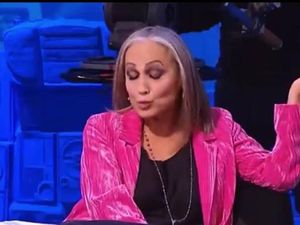In a striking political landscape, recent polling data indicates that the Australian Labor Party has significantly extended its lead over the Coalition, marking a pivotal moment in the lead-up to the next federal election. The latest YouGov Public Data poll, conducted from April 11 to April 15, reveals Labor's standing at 53% in the two-party preferred vote, compared to the Coalition's 47%. This 0.5% increase for Labor represents its most substantial lead in 18 months, surpassing its 2022 federal election performance of 52.1%.
For the first time in a YouGov poll, both major parties are tied on primary votes, each garnering 33%. While this marks a 1% increase for Labor, the Coalition has seen a 0.5% decline. Notably, the Coalition's current figure is 2.7% lower than its 2022 election result, and if this trend continues, it could represent the lowest primary vote for the Coalition since the Liberal Party's formation in 1944.
Minor parties and independents continue to hold a significant presence in the political arena, collectively accounting for 34% of the primary vote. Among these, One Nation has slipped to 7%, down 1.5%, while the Greens maintain a steady 13%, independents hold at 9%, and others account for 3%. The Trumpets of Patriots have seen a slight increase, now at 2%.
Paul Smith, the Director of Public Data at YouGov, noted, “In an election held today, the Coalition would receive the lowest vote they have received since the Liberal Party was formed in 1944, with Labor having a clear lead in all states except Queensland and leading in Outer Metropolitan electorates that will decide the election.” This statement underscores the critical battlegrounds where the Coalition must regain ground to remain competitive.
Despite these shifts, both major leaders are experiencing negative net satisfaction ratings. Prime Minister Anthony Albanese holds a net satisfaction rating of -6, with 43% of respondents satisfied and 49% dissatisfied. Meanwhile, Leader of the Opposition Peter Dutton's standing has worsened, dropping from a +11 net satisfaction in early April to -10, with 40% satisfied and 50% dissatisfied.
Albanese has maintained his position as the preferred Prime Minister, with 48% support, compared to Dutton's 38%. Albanese's popularity appears to be slightly higher among men (49%) than women (47%). Dutton's struggles are particularly pronounced in outer metropolitan electorates, where he trails Albanese by a significant 13%. Smith emphasized, “Peter Dutton’s 13-point deficit in the outer suburbs is a clear sign that voter opposition to him becoming Prime Minister is dampening support for the Coalition in electorates critical to winning government.”
As the political climate continues to evolve, the latest Freshwater poll for The Financial Review, conducted from April 14 to April 16 with a sample of 1,062 Australians, presents a more competitive picture. This poll shows a 50–50 tie based on respondent preferences, a one-point gain for Labor since the previous Freshwater poll conducted after the March 25 budget. Before rounding, Labor led by 50.3% to 49.7%.
In this Freshwater poll, primary votes remain unchanged, with the Coalition at 39%, Labor at 32%, and the Greens at 12%. By 2022 election preference flows, the poll suggests roughly a 50–50 tie. Albanese's net approval in this poll has improved slightly, rising one point to -10, while Dutton's remains steady at -11. Albanese still leads as the preferred Prime Minister by 46% to 41%.
Economic issues remain at the forefront of voter concerns, with cost of living cited as the most pressing issue by 73% of respondents. The Coalition's lead over Labor on cost of living has shrunk from a high of 14 points last October to just two points in the latest poll. Similarly, the Coalition's advantage on economic management has diminished from a 17-point lead last November to six points now.
In a separate survey conducted by Resolve for Nine newspapers from April 14 to April 15, voters expressed a preference for Labor's tax policy over the Coalition's by 40% to 34%, and favored Labor's housing policy by 40% to 27%. These findings indicate a growing sentiment among voters leaning towards Labor's approach to critical economic issues.
Meanwhile, the Australian Bureau of Statistics reported on April 17 that the unemployment rate remained steady at 4.1% in March, unchanged from February, with over 32,000 jobs added. The employment population ratio also held steady at 64.1%, following a slight decline from a near-record high of 64.4% in January.
In the Western Australian state election held on March 8, Labor secured 16 of the 37 upper house seats, a decrease of six from their previous majority in 2021. The Liberals gained three seats, bringing their total to ten, while the Nationals secured two. The Greens increased their representation to four seats, and One Nation captured two. Overall, left-wing parties won the upper house by a margin of 22 to 15 over their right-wing counterparts.
The political landscape in Australia remains fluid as both major parties brace for the upcoming federal election. With Labor currently enjoying a lead in multiple polls and voter sentiment shifting, the Coalition faces an uphill battle to regain its footing. As the election date approaches, the dynamics of public opinion will continue to play a crucial role in shaping the future of Australian politics.






